One of the biggest problems prevalent in Bollywood is the portrayal of women. In its almost 70-decade-long history, Bollywood has seen the female lead take on many forms, from Maa, the ideal biwi to an independent woman. Although change is evident now, many films still show marital and relationship inequality.
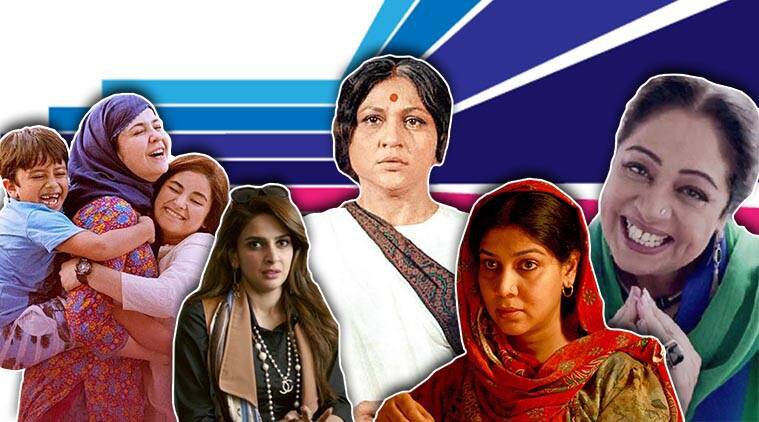
For every movie like Queen or Lipstick Under My Burkha, we have a Kabir Singh or Dabangg, where the only job of the women is to either be a plot device, a punching bag or to provide pretty visual relief from the action.
The Late 1940s–1960s
The beginning of the ‘Golden Era’ of cinema is considered to be a more idealistic portrayal of society. Unlike the decade that succeeded, women had a solid role in films. One standout movie of the era, Mother India (1957), captures the identity of female characters of this period—the idea of women being celebrated as the nation’s pillar of strength—a thought that’s perfectly represented in the iconic movie poster.
In Guide (1965), Waheeda Rahman’s character Rosie left her cheating and unsupportive husband to follow her passion and be with a man she chose. When he didn’t turn out to be what she thought he was, she left him too. This was so unusual for the time, that it was seen as a questionable character because agency was not something female characters enjoyed.
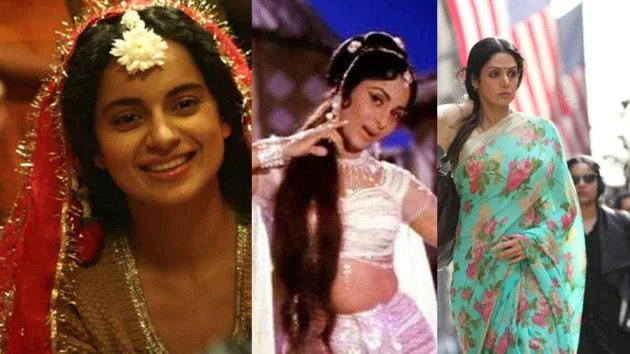
However, by and large, in the golden age of the Hindi film industry, damsels in distress had little to do with the actual plot. Their purpose was only to be the romantic interest and be an object for the hero to save in the end to show his manhood. They were ‘moral women’, representing ‘proper’ female roles. They believed in the husband as a ‘Godly’ person in their lives, respected their elders, were quiet and kind, and fiercely loyal to tradition. Damsels, in a way, represented Indian culture and tradition.
The 1960s-1970s
The only ideal woman in Bollywood is the traditional ‘good’ wife. In the films of the ’60s and the ’70s, she was often typified as a girl who would wake up early, sing bhajans, worship her husband and cook for the family.
The 1970s-1980s
The 70s and 80s were filled with wives or sisters of the heroes pleading “bhagwaan ke liye mujhe chhod do”. It was the era of sexual violence being used as a plot device and the hero’s character arc, providing perverted titillation to the audience. The sister or wife’s rape enraged heroes such as Amitabh Bachchan in Aakhree Rasta and Raj Babbar in Aaj Ki Awaz.
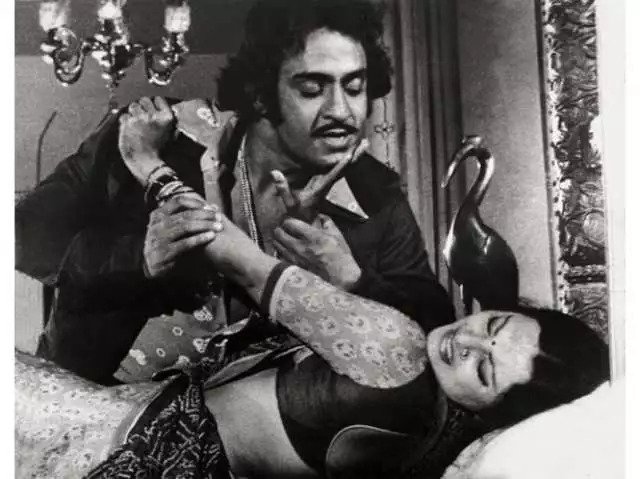
Either that, or the female ‘protagonist’ was sorrowful and melodramatic, Meena Kumari even being dubbed as tragedy queen.
Female leads in Bollywood in the 1970s-80s were relegated to the role of a mother or a dutiful wife. This mother figure was often shown undergoing taunts and oppression in dutiful silence and getting her redemption in the end via paranormal or masculine intervention. Women were put on a pedestal as traditional mothers. Two movies that perfectly exemplify this are Jai Santoshi Maa (1975), and Seeta Aur Geeta (1972).
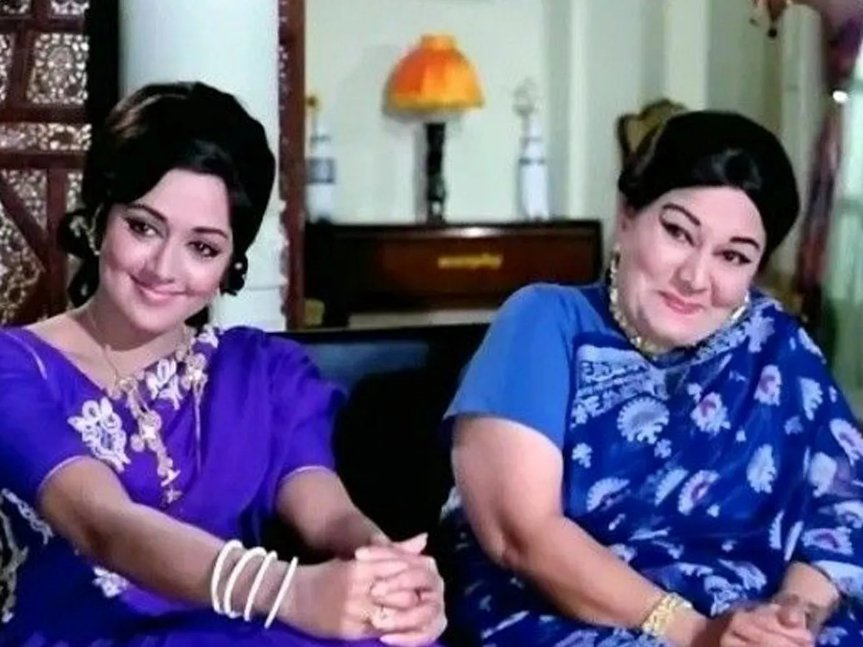
In both the movies, the ‘good’ female character was shown as a timid, oppressed woman who wordlessly suffered torture. Their silence is virtuous and seen as something all women must have. Only subservient women get happy endings when they are rescued by men.
The Amitabh Bachchan film Kaalia presented Bollywood’s obsession for sanskari women in a lighter vein when Parveen Babi, playing a pickpocket, tries impressing the hero’s conservative bhabhi with a saree-clad makeover. On the other hand, Ram Teri Ganga Maili shows how the ideal and meek wife is nothing without the protection of her husband.
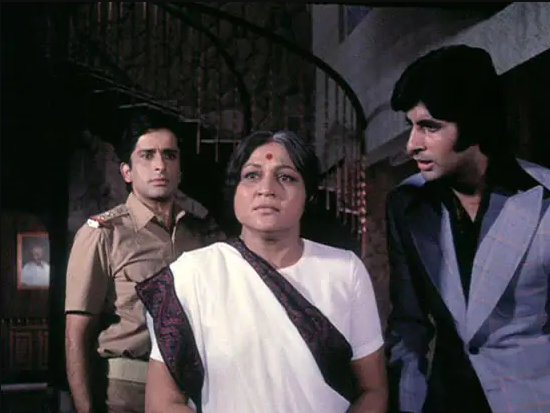
“Mere paas maa hai,” the legendary dialogue sums up mothers in Hindi cinema. Clad in a white saree, Nirupa Roy and Nalini Jaywant was the staple onscreen mothers. Their only identity was cooking for their sons and their daughters. Without a husband, since they were usually widows, mothers became weak elements for their sons to protect.
The 80s increased a spew of family films with women only being the bahu, bhabhi, or single mothers. The good girl is the one whom the hero ultimately picks to take home. For example, a foreign-educated Salman Khan in Maine Pyar Kiya (and later in Hum Saath Saath Hain) prefers the coy conservatively dressed girl.
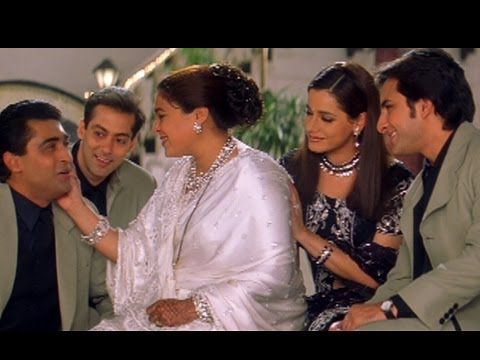
The 1980s-1990s
Bollywood in the 1980s-90s saw the emergence of the action star and problematic themes. The female lead became a one-dimensional character whose entire existence in the narrative of the story was to be at the mercy of the bad guy first, and then her brother/boyfriend/husband, who will valiantly come and save her. While films like Sadma (1983) and Chandni (1989) defied the norm.
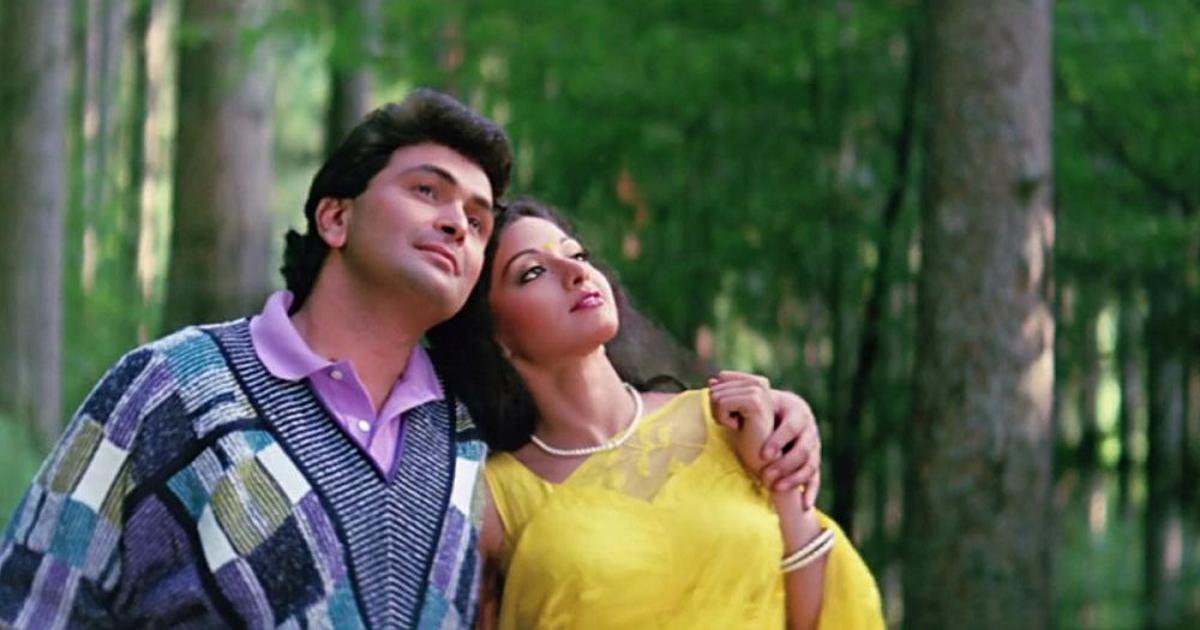
The female lead of this era was liberated with her well-paying job but still relies on the support of men. In the 1994 Mohra, Raveena Tandon, one of the three female characters, investigates a murder as a journalist. However, she is relegated to the role of the damsel in distress, despite being an educated and accomplished woman. Ironically, what her character is most remembered for today are two dance numbers, including one where she writhes in a wet yellow sari in the rain (Yep, that one).
The 2000s
The early 2000s marked Bollywood’s transition from where it was to its current form. One of the important films of the millennia is Aitraaz (2004). Priyanka Chopra’s character, Sonia, is portrayed as a driven model who terminates a pregnancy for the sake of her ambitions, and later schemes to get her ex convicted of rape for dumping her. Sonia was the villain. Except for the fake allegations, the factors attributed to her negative characteristics were her being driven, career-focussed, sexually liberated and with bodily agency.
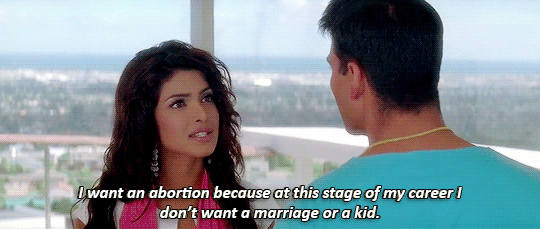
In Vivah, the almost pubescent Shahid Kapoor repeats the template while wooing the very traditional Amrita Rao. In Cocktail, Saif Ali Khan picks the super-sanskari Meera, played by Diana Penty, after gallivanting with the free-spirited Veronica. Worse, when Veronica tries wooing him, she turns demure in salwar kameez.
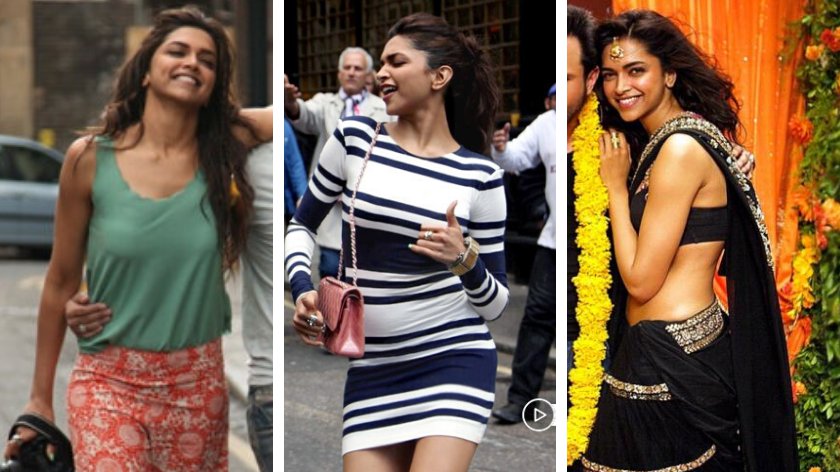
While women in cinema were now exercising bodily autonomy, it was still a grim situation because they were being judged for it. It was either this, or they were made to give up their personal choices for men.
Through the exposure awarded by the internet, more women writing films, and increasing literacy, the audience grew with more examples of progressive cinema and rejected one-dimensional female characters, looked at through men.
However, one look at the many action blockbusters from recent years will rid you of any notion that we have finally eliminated gender inequality. Interchangeable female leads in inconsequential roles seem to be a theme in a majority of hit movies.
The 2010s
Iconic female characters include Aisha in Dil Dhadakne Do, Piku in Piku, and Shamshun and Badru in Darlings. These portrayals of being a woman in 2010s and later are admirable. A woman is no longer a damsel wife waiting to be rescued by her husband, she walks out, builds a career, does whatever she wants and even avenges domestic violence.
There are several characters like Kaashi Bai, Amrita (Thappad), Safeena (Gully Boy), and Sunita (Kapoor & Sons) that showcase the layered forms of womanhood in relationships. Meanwhile, movies like Kabir Singh, Jugg Jugg Jeeyo, and Kick are still catering to feminist brownie points while being patriarchal.
Meanwhile, if she chooses to be a mother, she does not sacrifice her entire life or take disrespect. We need more mothers like Shashi in English Vinglish, Amrita Singh in 2 States and Dolly in Vicky Donor, mothers who call out shit, stand their ground and reject mistreatment.
In 2022, the ‘good’ wife is an independent and self-respecting woman.

















